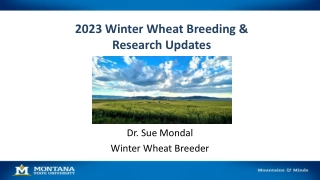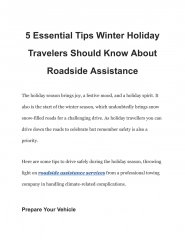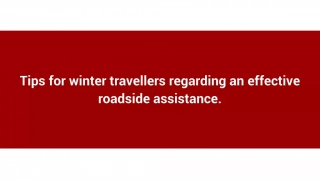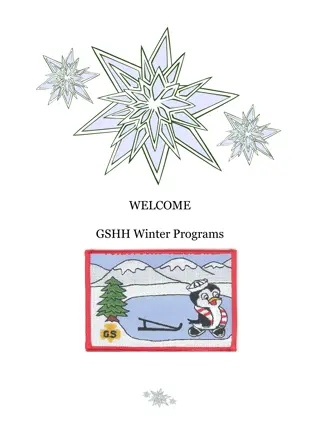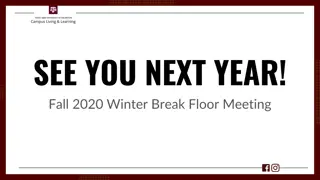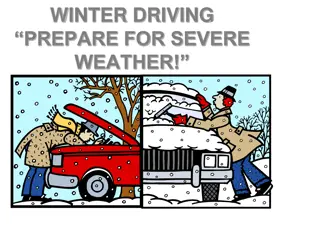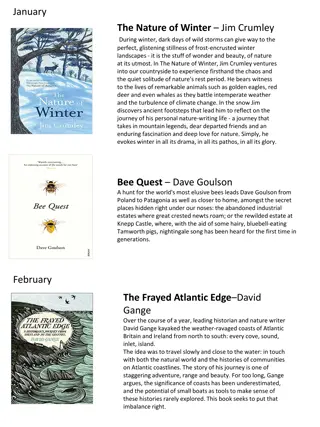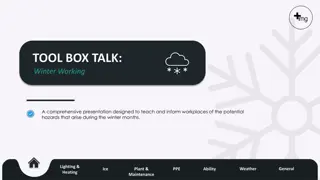
Tesla Winter Driving Tips for Cold Weather Conditions
Prepare your Tesla for winter with these essential tips: understand battery preheating, prevent frozen extremities, and optimize winter tire performance. Learn how to maintain your electric vehicle in cold weather effectively.
Download Presentation

Please find below an Image/Link to download the presentation.
The content on the website is provided AS IS for your information and personal use only. It may not be sold, licensed, or shared on other websites without obtaining consent from the author. If you encounter any issues during the download, it is possible that the publisher has removed the file from their server.
You are allowed to download the files provided on this website for personal or commercial use, subject to the condition that they are used lawfully. All files are the property of their respective owners.
The content on the website is provided AS IS for your information and personal use only. It may not be sold, licensed, or shared on other websites without obtaining consent from the author.
E N D
Presentation Transcript
TCOO Winter With Your Tesla
Preheat Battery Preheating the cabin does not necessarily preheat the battery. Once you start driving, the battery is being heated by the heat scavenged from the motor & inverter (along with cell heat generated by chemical process). Plugging into Level 2 will not necessarily engage battery heater. Plugging into Level 3 will engage battery heater. Schedule your charge to end at your planned time of departure.
Preheat Battery Advantages: 1. Full Regen 2. Consistent driving experience 3. Safer * Disadvantage: 1. Inefficient 2. Reduced range if not on shore power
Frozen Extremities Prevention There s no heat under that frunk! Mirrors: 1. Turn off auto-fold 2. Turn off auto-tilt * Wipers: 1. Put in service mode 2. Use de-icing washer fluid
Frozen Extremities Prevention Door Handles: 1. Polish * Charge Port Door: 1. Polish * * Polish: Pro Honda - Spray Cleaner & Polish Original - Spray Cleaner & Polish The
Frozen Extremities Prevention Windows: 1. Weatherstrip Lubricant Based on DuPont Krytox 2. Silicone Lubricant Water based is okay Don t use petroleum / alcohol based 3. Dielectric Grease
Frozen Extremities Tools & Tips Carefully crack the ice 1. Bondo Spreader 2. Spudger
Frozen Extremities Tools & Tips Do not chisel the ice Do not break / smash the ice Don not peel the ice Do not use warm / hot water
Winter Tires Air pressure typically drops 1-2 psi per 10 degrees F. Tread Depth Minimum: State 2/32 Summer 3/32 Winter 4/32 Directional tread increases performance, but can increase cupping.
Winter Tires Summer tires shouldn't be used below 45 F, and never on ice or snow. All-Season tires will not perform as well as winter tires when it gets below 45 F, regardless of snow/ice or not. RWD cars will benefit most from winter tires, but AWD cars will benefit as well. If you have low profile tires for summer, you'll also benefit from a higher profile winter tire. This will save you from bent wheels and blowouts due to ice holes and potholes.
Higher Energy Consumption 20-30% increase on average. Denser air leads to increased friction. Road debris increases rolling resistance. Snow on vehicle reduces aerodynamics. Colder temps require running a resistive cabin heater, seat heaters, defrost. Colder temps require the battery heater to run to maintain a safe minimum temperature. Running the heaters to preheat the vehicle prior to departure.
Reduced Energy Available Some lost range isn t consumed. Cell chemistry requires a minimum temperature to release full capacity. As cells cool, internal resistance increases. This reduces charge rate when battery is cold. .
Winter Driving Tips Turn on Chill Mode. Turn on Range Mode. Set Regenerative Braking to Low. Clear off all sensors, cameras, radar. Clear all snow, as it won t melt away. TACC requires both radar & front camera.
Thanks!! Presented By: John Gray

